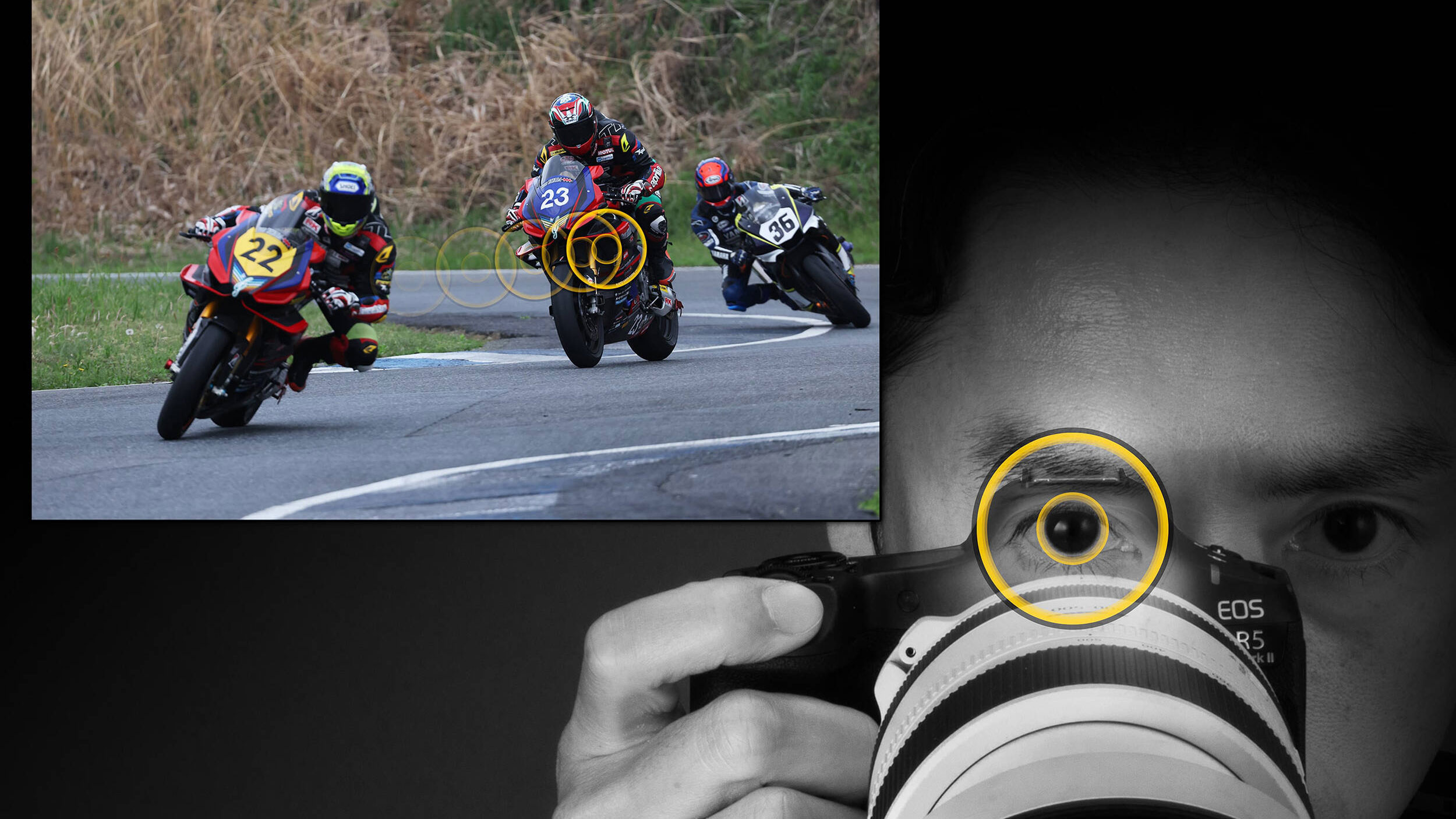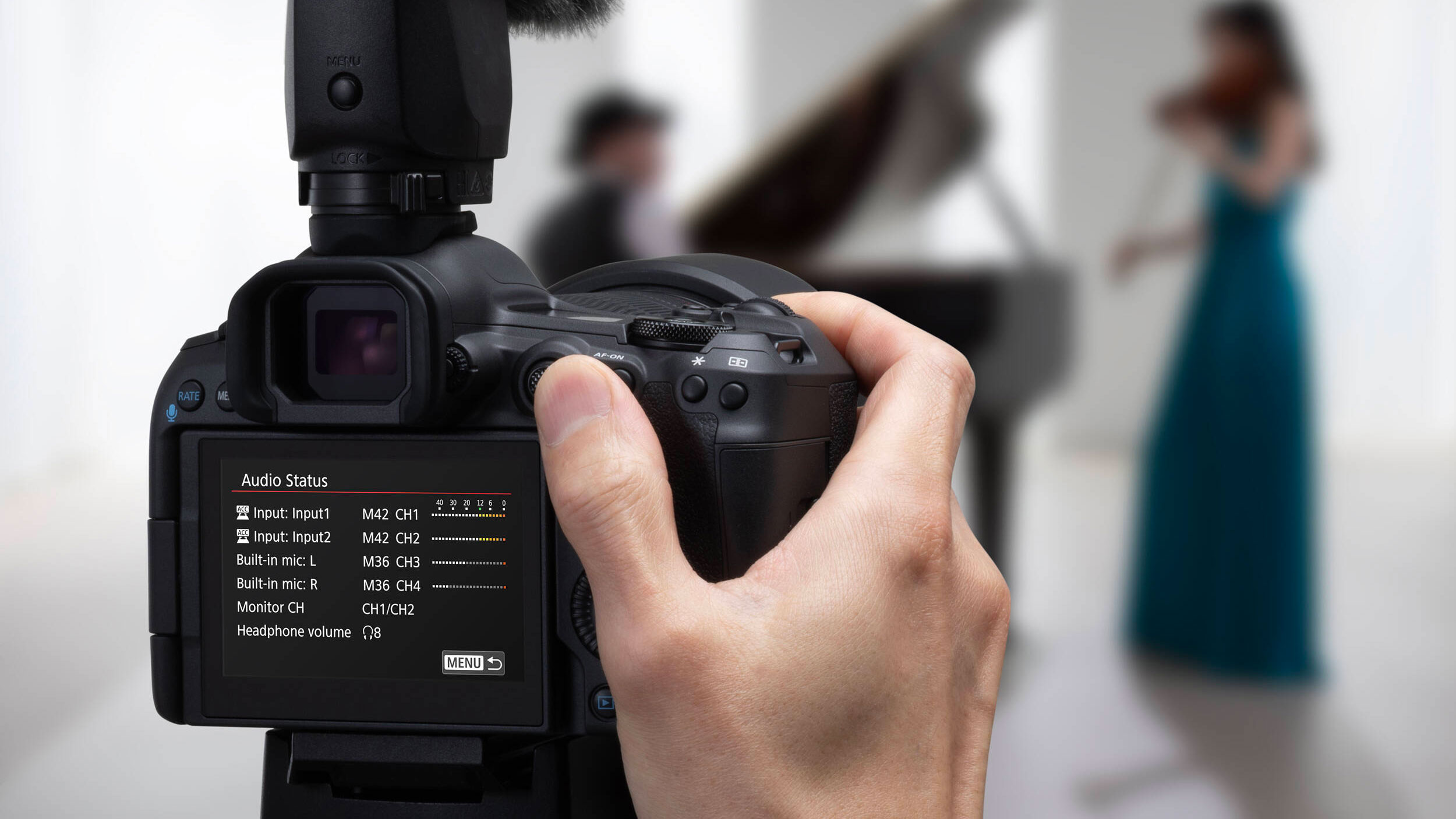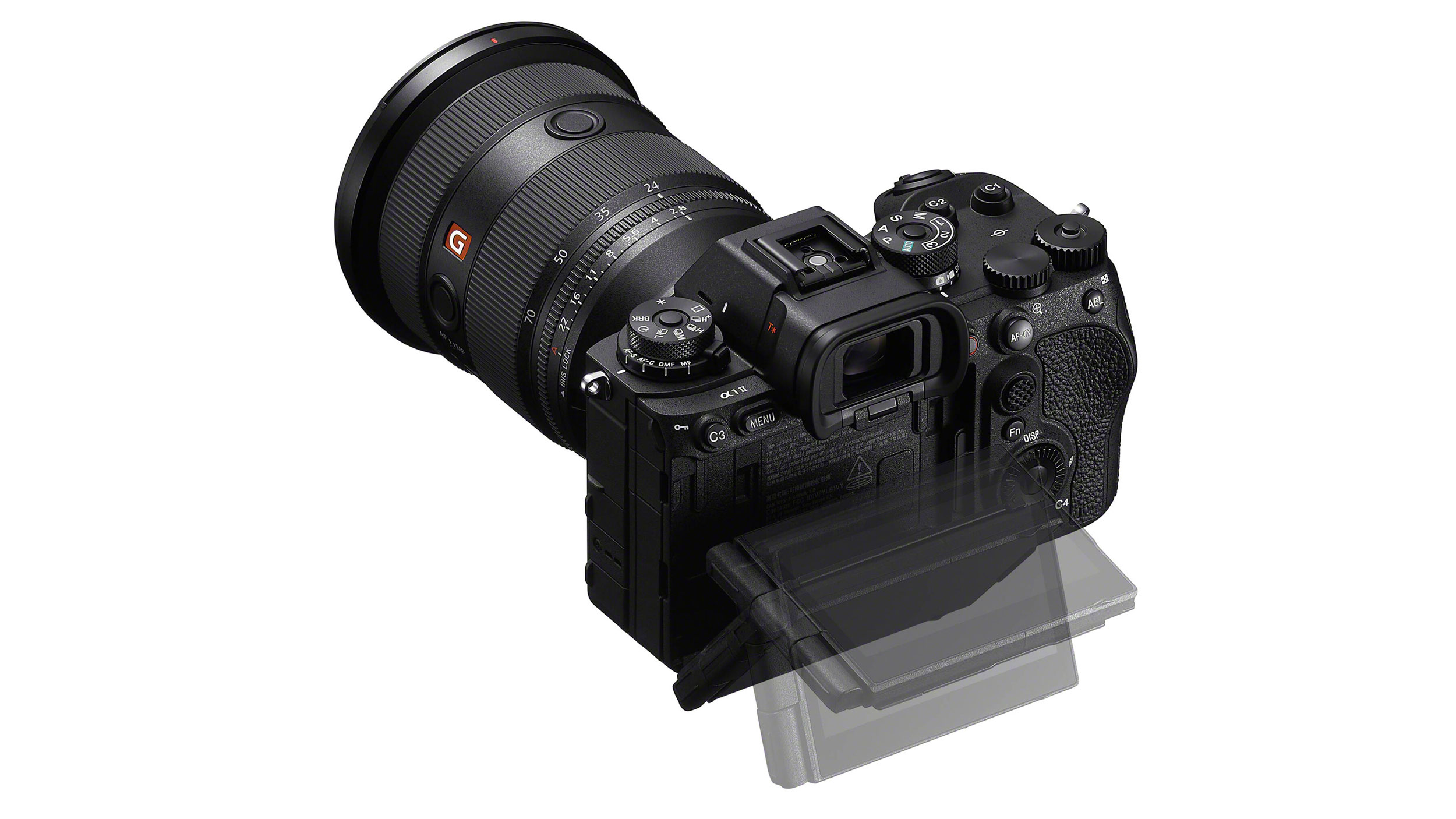Sony A1 II vs Canon EOS R5 Mk II – with a $2000 price difference is it even a contest?
It’s Sony vs Canon in this clash of the titans, but how do these two brand new ultra-high-tech flagship cameras compare?

The Sony A1 had long held the crown as the most powerful all-round camera on the market, but it was increasingly being overtaken by more specialized and cheaper alternatives from within Sony’s own camera range.
The Sony A1 was one of the best Sony cameras, of course, but the Sony A7R V has higher resolution, the Sony A9 III is faster and better for sports, while the Sony A7 IV is an all-round A1 alternative that people can actually afford and perhaps one of the best hybrid cameras in the Sony range, or at least one of the most practical. So with the Sony A1 II, Sony really did have some ground to claw back, and it remains to be seen whether it’s done enough.
Canon had a different task with the original EOS R5. Here was a camera that didn’t actually need a whole lot of improvement as one of the best, if not THE best Canon cameras. But Canon nevertheless went ahead and did it, launching the Canon EOS R5 Mark II, a camera with so many technical advances it would take a whole series of articles to list them all.
So then we have two leading camera makers following two different evolutionary trails to produce two of the most technically advanced full frame mirrorless cameras that money can buy, and certainly two of the best cameras for professionals. But which one comes out on top? Let’s take a deep dive into the specifications to find out.
Sony A1 II vs Canon EOS R5 Mark II in 2024
Why you can trust Digital Camera World
Sensor

• Sony A1 II: 50.1MP full frame Exmor RS with Sony BIONZ XR processor, 21MP in APS-C mode, pixel-shift mode up to 800MP from 16 frames
• Canon EOS R5 Mark II: 45MP back illuminated stacked full frame sensor, DIGIC Accelerator + DIGIC X, in-camera 180MP AI upscaling
Much of the Sony A1’s reputation came from its 50MP sensor, and the same applies to the Sony A1 II, which leverages the power of the Sony BIONZ XR processor to produce continuous shooting frame rates previously unheard of with a high-resolution camera. The 50MP native resolution means it can still capture 21-megapixel images even in APS-C crop mode and, at the other end of the scale, the A1 II can utilize its pixel-shift multi-frame mode to merge 16 separate frames into colossal 800MP images.
But the 45MP stacked BSI sensor is not so far behind the Sony’s for resolution and its high-speed readout means rolling shutter distortion is minimized. More controversially, though, Canon has dropped its high-res sensor-shift mode, so the EOS R5 Mark II can’t compete with the Sony A1 II here. And while Canon has introduced internal AI powered 180MP upscaling and 2-stop AI denoising, many photographers might prefer to use desktop software to achieve the same results – if they need them at all.
These two cameras are pretty evenly matched for resolution. If you ignore all the resolution-increasing trickery, the Sony has 50MP and the Canon has 45MP – hardly a big difference.
ISO range
• Sony A1 II: ISO 100-32,000, exp 50-102,400, 15 stops DR at lower ISOs
• Canon EOS R5 Mark II: ISO 100-51,200, exp 50-102,400, in-camera AI 2-stop denoising
Both cameras have full frame sensors with similar resolution, so it’s no surprise the ISO ranges are similar too. The EOS R5 Mark II has a slightly higher maximum native ISO of 51,200 versus ISO 32,000 on the Sony A1 II, but that’s perhaps explained by the Canon’s slightly lower resolution. Canon’s in-camera denoising might appeal to some photographers, but it doesn’t seem enough on its own to give a definite advantage.
Autofocus

• Sony A1 II: Hybrid AF, 759 phase detect AF points. AI processing unit, auto AI subject recognition, human pose estimation, recognition of a wide range of subjects other than people, such as animals, vehicles and insects.
• Canon EOS R5 Mark II: Dual Pixel Intelligent AF, 5850 AF points, 100% frame coverage, Action mode, Registered People Priority, eye-control AF, Auto AI AF subject selection
Autofocus is a major battleground for camera makers, and Sony and Canon have both come in with guns blazing. The A1 II now has all the AI subject recognition of other, newer Sony models, including human pose estimation, and adds in automatic subject recognition – a first for Sony, but something Canon has been offering for some time. Sony also claims performance improvements in Real-time Recognition AF, Real-time Tracking and human eye recognition.
The A1 II has some useful AF improvements, then, but they pale into insignificance compared to what Canon has done with the EOS R5 Mark II. Canon’s new Dual Pixel Intelligent AF offers no fewer than 5,850 manually-selectable AF points covering 100% of the frame, and an Action mode that can identify key subjects in sports like football, volleyball and basketball. It has a kind of ‘ball-recognition’ AF that can even work out who currently has possession. The EOS R5 II goes further. It can register up to ten key individuals in a shoot in order of priority, and also has eye-control AF.
Sony is deservedly regarded as one of the leaders in high-end autofocus technology, but Canon has been pushing back the frontiers too, and the EOS R5 Mark II seems to win this little skirmish fairly convincingly.
Continuous shooting

• Sony A1 II: 30fps, 120 AF/AE calculations per second, max 400 JPEGS, 200 RAW+JPEG, 100 lossless compressed RAW
• Canon EOS R5 Mark II: 30fps, max 200 JPEGs, 93/86 RAW (CFexpress/SD)
The Sony A1 II and the Canon EOS R5 Mark II can both shoot at 30fps with their electronic shutters, and both offer blackout-free viewfinders. Whatever advantage the Canon might have with its leading edge AI autofocus could be offset, for some users, by the Sony’s superior buffer capacity – though the specs are ambiguous here because they quote up to 200 RAW+JPEG images in a burst but only 100 lossless compressed raw files. Either way, it’s a close-run thing.
Video

• Sony A1 II: 8K 30p 4:2:2 10-bit,, Super 35 oversampled from 5.8K, 4K up to 120p
• Canon EOS R5 Mark II: 8K 60p 12-bit internal RAW, 4K up to 120p
Both cameras can shoot 8K video, but the Canon is altogether more convincing. The A1 II tops out at 16:9 8K 30p, while the Canon can go right up to DCI 17:9 8K 60p. What’s more, although the A1 II can shoot in 4:2:2 10-bit, the Canon offers internal RAW capture.
The original EOS R5 was the first 8K mirrorless camera on the market and was criticised for its heat build up and recording limits. The Mark II version has improved heat dissipation, passive cooling and an optional Cooling Fan CF-R20EP grip. On paper, it’s a clear step ahead of the Sony for 8K capture.
Stablization

• Sony A1 II: 5-axis IBIS, 8.5 stops at the center, 7.0 stops at periphery
• Canon EOS R5 Mark II: 5-axis IBIS, 8.5 stops center, 7.5 stops peripheral
The Sony A1 II and Canon EOS R5 Mark II both offer 5-axis in-body stabilization, and both makers claim 8.5 stops of shake compensation – in the center of the frame. This is the first time we’ve seen camera makers offering different values for peripheral compensation – 7 stops for the Sony, 7.5 stops for the Canon. It’s an acknowledgement, at last, that rotational shifts from camera movement are worse at the edges of the frame, a phenomenon we’ve probably all seen but not really paid attention to.
The Sony A1 II also has an Active Mode using the image stabilisation unit and a gyro sensor, while Dynamic Active Mode adds electronic stabilisation. It also offers Auto Framing for tracking and cropping AI-recognised subjects and automatically adjusts shot composition, and a Framing Stabilizer feature which automatically keeps the subject in the same place in the frame when the camera operator is moving alongside.
The Sony’s stabilization set up does look more comprehensive on paper, but digital stabilization, Auto Framing and the Framing Stabilizer do add a crop, as does Sony’s much-vaunted focus breathing compensation feature.
Viewfinder

• Sony A1 II: 0.64 type, 9.44m-dot, 0.9x magnification. Blackout-free viewing
• Canon EOS R5 Mark II: 0.5 type, 5.76m-dot, 0.76x magnification. Blackout-free shooting
The Sony A1 II’s EVF is pretty stellar. The 0.64 type panel is a little larger than the Canon’s 0.5 type display, and the Sony’s EVF has almost twice the resolution at 9.44 million dots versus 5.76 million dots for the Canon’s display. The Sony even offers a higher 0.9x magnification versus the Canon’s 0.76x magnification, so although the EOS R5 Mark II’s EVF is pretty good, the Sony’s is in a different league.
Rear screen

• Sony A1 II: 4-axis multi-angle, 3.2-in, 2.1m dots
• Canon EOS R5 Mark II: Vari-angle, 3.2-in, 2.1m dots
Round the back, these cameras offer almost identical displays. Both use a 3.2-inch display that’s usefully larger than the 3-inch LCDs on most cameras, and both offer a resolution of 2.1 million dots. However, while the EOS R5 Mark II has a conventional flip-out vari-angle mechanism, the Sony adds a 4th axis for a tilt movement. Complicated or useful? You decide. The Sony does seem to have a slight operational edge, nonetheless.
But that’s not the end of the story. The EOS R5 Mark II has a good-sized status panel on the top plate for showing exposure and other settings. The Sony A1 II does not. If you’re a fan of status panels (as many pros are) that easily swings things in the Canon’s favor.
Storage

• Sony A1 II: 2x SD/CFexpress Type A
• Canon EOS R5 Mark II: 1x CFexpress Type B, 1x SD UHS-II
Both of these cameras have twin card slots; the difference is that the Sony A1 II has matching CFexpress Type A/SD dual format slots, while the EOS R5 Mark II mixes two card types, featuring one CFexpress Type B slot and one SD UHS-II slot.
Which is best? It depends on where you stand on card types. The A1 II supports matching cards for duplication or backup, but it uses smaller and more expensive CFexpress Type A cards. The EOS R5 Mark II supports two card types – and many photographers will have a lot of existing SD cards or perhaps don’t need the speed of CFexpress. CFexpress Type B cards are also a little more cost-effective and more widely used.
Battery
• Sony A1 II: NP-FZ100, 420 shots (EVF), 520 shots (LCD)
• Canon EOS R5 Mark II: LP-E6P, 340 shots (EVF), 630 shots (LCD)
Interestingly, both cameras show a difference in battery life between shooting with the EVF and using the rear screen, but the difference is considerable with the EOS R5 II, which lasts almost twice as long if you use the rear screen. Overall, though, both cameras are pretty much on the same level for battery life.
Size

• Sony A1 II: 136.1 x 96.9 x 82.9mm, 743g
• Canon EOS R5 Mark II: 138.5 × 101.2 × 93.5mm, 746g
The Sony A1 II is a little smaller than the EOS R5 Mark II in width, depth and height, but there’s very little difference in weight, and these cameras are going to feel much the same in the hand, especially with big fast-aperture pro lenses.
Price

• Sony A1 II: $6,498 / £6,299
• Canon EOS R5 Mark II: $4,299 / £4,499
The Sony A1 II and Canon EOS R5 Mark II are so close in overall capabilities, that it’s hard to understand why the Sony costs approximately $2,000 / £2,000 more. It’s not as if the EOS R5 Mark II is playing catchup – in many areas it’s demonstrably superior to the Sony. Perhaps the pricing is historical – the original Sony A1 was already at this elevated price point and with the Canon EOS R5 Mark II it’s possible Canon didn’t want to raise the price point for the successor to the original EOS R5.
Whatever the explanation, the Canon EOS R5 Mark II is a camera of similar all-round capabilities that’s substantially cheaper.
Sony A1 II vs Canon EOS R5 Mark II: summary

The original Sony A1 was launched as the camera to rule all others, combining resolution, speed and 8K video in a package no other camera could approach. For a time it was indeed king of the hill, but it’s hard to make a camera the best in all three areas, and Sony itself didn’t help, producing newer, cheaper models that were better in specific areas. The Sony A7 II goes some way towards bringing that concept back up to date, but it’s still an extremely expensive camera that only makes sense if you need everything that it does, not just one or two of these things.
The Canon EOS R5 Mark II is different. It trades features and abilities with the Sony in a way that makes these cameras difficult to separate, but it does it at a much lower price point. Worse (for Sony), the EOS R5 Mark II’s standout autofocus technologies and 8K video give it an edge for sports/action photography and filmmaking, the two key battlegrounds for today’s high-end mirrorless cameras.
Get the Digital Camera World Newsletter
The best camera deals, reviews, product advice, and unmissable photography news, direct to your inbox!

Rod is an independent photography journalist and editor, and a long-standing Digital Camera World contributor, having previously worked as DCW's Group Reviews editor. Before that he has been technique editor on N-Photo, Head of Testing for the photography division and Camera Channel editor on TechRadar, as well as contributing to many other publications. He has been writing about photography technique, photo editing and digital cameras since they first appeared, and before that began his career writing about film photography. He has used and reviewed practically every interchangeable lens camera launched in the past 20 years, from entry-level DSLRs to medium format cameras, together with lenses, tripods, gimbals, light meters, camera bags and more. Rod has his own camera gear blog at fotovolo.com but also writes about photo-editing applications and techniques at lifeafterphotoshop.com
